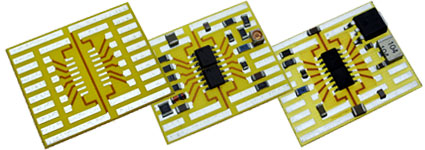Hi Micheal,
The oscillation was seen by connecting a probe to the o/p socket, with the i/p socket shorted. My audio analyser picked up broadband fuzz at around -50-ish. I then hooked the scope probe and saw 18mV of something sine-shaped at 18Mhz.
The layout is on stripboard! The next stage is to give it to the PCB designer I work with. It seems daft to prototype anything with a 'relatively' quick opamp such as the 4562 on strip-board, but you have to get proof of concept somewhere, right? With anything faster I suspect you'd have to go for a multi-layer PCB from the start. Just the inductance of an IC socket can set off some OAs.
edit - trust me, you don't need to see the layouts. The moral of the story is that just a couple of mm here and there can trigger bad behaviour if the OA is quite fast.



